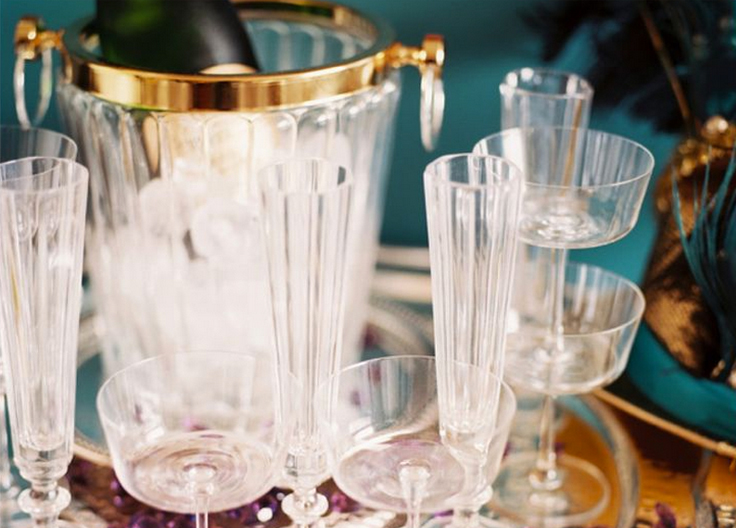Lately we’ve been feeling like champagne coupes are all the rage. They’ve been taking over cocktail hours across Chicago, and after a few months of sipping from coupes at lunches and events, we are officially declaring them “in.” If you’ve also caught on to this chic glassware trend, and are trying to decide whether to drink from a coupe or a flute, we did a little research for you! Here is everything you need to know about champagne coupes:
The history…
Coupes are not, by any means, a “new” trend. The champagne coupe was invented in 1663 in England and was considered the only way to drink champagne. In the 19th century, flutes finally made their debut. According to this article, champagne wasn’t as “sparkling” in the 17th and 18th centuries, but once champagne progressed in the 19th century, the glasses had to as well. The flute was actually created in order to preserve the sparkling and aromas, and is still used by wine and champagne experts who appreciate the bubbles today! But, like all trends, coupes came back in a major way post-prohibition. They were, once again, a symbol of status, elegance, and eliteness throughout the 1930s. (Source)
The facts…
Flutes are tall and narrow. The shape of the flute slows down the loss of CO2, which makes your bubbles last longer and keeps your drink cooler.
Coupes are shallow and wide, forcing the CO2 to rise and dissipate very quickly. This essentially means that your champagne won’t be very “sparkling” after more than 3 minutes of mingling. (Source)
The low down…
Coupes are incredibly chic, elegant and “on trend.” Having coupes at your cocktail hour will surely prove your trend watching ability, but may leave your guests with warm drinks. The solution? Stick with flutes for champagne, and use coupes for cocktails! A signature cocktail poured into a coupe? Amazing. Champagne toast in a flute? Cool, refreshing, and still chic.
Photos via They All Hate Us, Cristina G Photography (Paper Products by Anna Kate Design), la de da photography, Style Me Pretty, This is Glamorous, The Decorista




